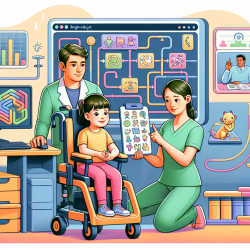Introduction
In the realm of speech-language pathology, understanding the nuances of various clinical phenotypes is crucial for developing effective therapeutic strategies. The recent study, "Measurement and Characterization of Distinctive Clinical Phenotypes Using the Frontotemporal Lobar Degeneration Module (FTLD-MOD)," offers valuable insights into differentiating between primary progressive aphasia (PPA) and behavioral variant frontotemporal dementia (bvFTD). These findings can empower practitioners to make data-driven decisions, ultimately enhancing outcomes for children and adults alike.
Understanding FTLD-MOD
The FTLD-MOD is a specialized neuropsychological battery designed to evaluate clinical symptoms associated with frontotemporal lobar degeneration (FTLD). This study utilized the FTLD-MOD to analyze data from 165 subjects with PPA, 268 with bvFTD, and 251 cognitively normal controls. The goal was to determine whether the FTLD-MOD could effectively differentiate between these two distinct FTLD-related syndromes.
Key Findings
- Language vs. Behavior: PPA participants exhibited significantly poorer performances on all language tasks, while bvFTD participants showed poorer performances on most behavioral measures.
- Memory Performance: No significant differences were observed in memory performances between the two groups, highlighting the importance of focusing on language and behavioral assessments.
- Diagnostic Specificity: The FTLD-MOD demonstrated the ability to differentiate between PPA and bvFTD, supporting its use as a diagnostic tool in clinical settings.
Implications for Practitioners
For speech-language pathologists, these findings underscore the importance of utilizing comprehensive assessment tools like the FTLD-MOD to accurately identify and differentiate between clinical phenotypes. By understanding the specific language and behavioral deficits associated with PPA and bvFTD, practitioners can tailor their therapeutic approaches to address the unique needs of each individual.
Encouraging Further Research
While the FTLD-MOD has shown promise in differentiating between PPA and bvFTD, further research is needed to refine these diagnostic tools and explore their application in diverse populations. Practitioners are encouraged to engage in ongoing research and contribute to the growing body of knowledge in this field.
Conclusion
The ability to differentiate between FTLD phenotypes using the FTLD-MOD represents a significant advancement in the field of speech-language pathology. By embracing data-driven approaches and continuing to explore new research avenues, practitioners can unlock the potential for better outcomes in children and adults affected by these complex conditions.
To read the original research paper, please follow this link: Measurement and characterization of distinctive clinical phenotypes using the Frontotemporal Lobar Degeneration Module (FTLD-MOD).










